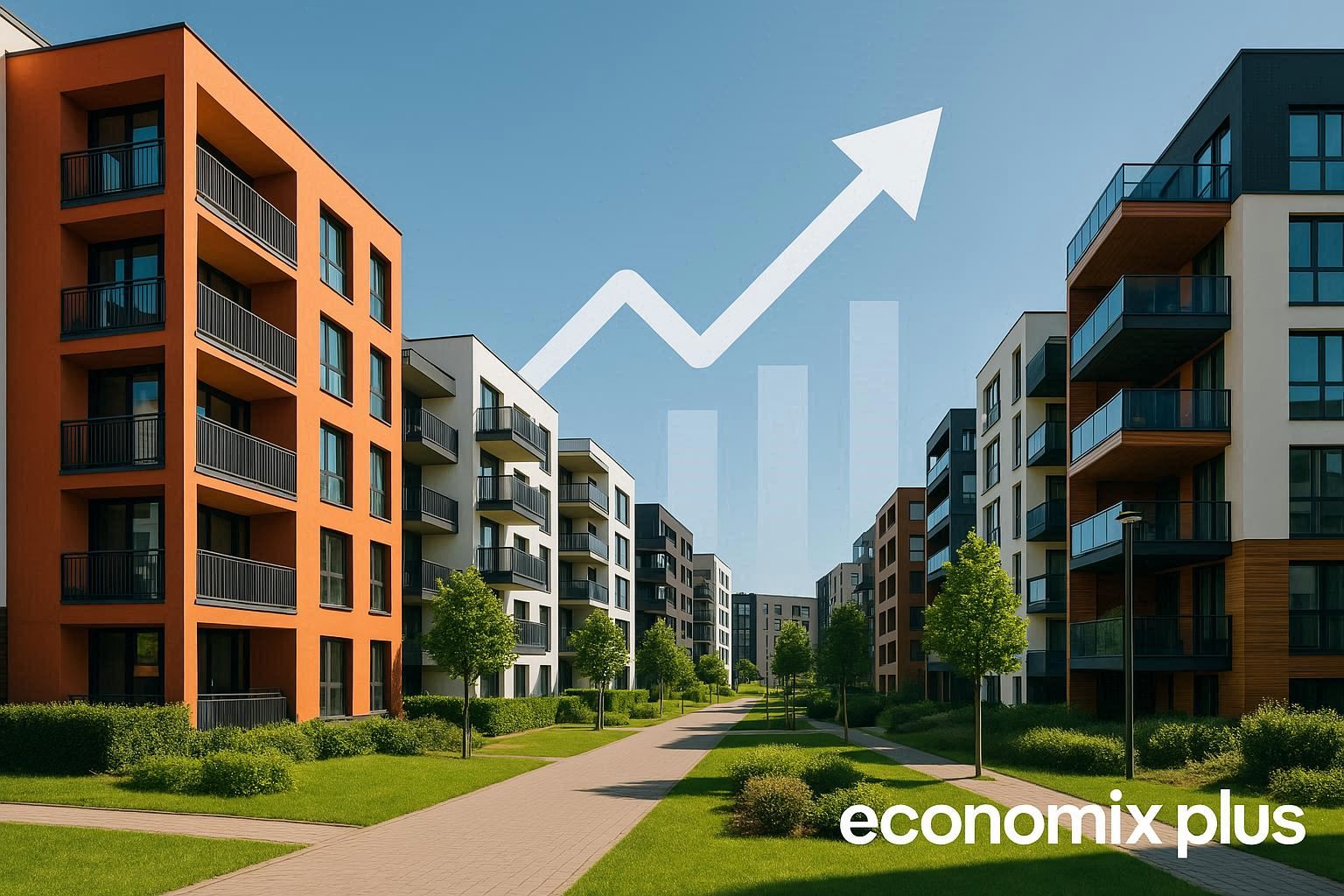What happens when a pillar of the world’s second-largest economy begins to crumble? Once driving nearly 25% of China’s GDP, the property sector now faces its steepest price decline in nearly a decade. June 2024 data revealed residential values fell at their fastest rate since 2015, shaking consumer confidence and global markets alike.
This downturn extends beyond empty apartments and stalled construction sites. The ripple effects threaten job markets, banking stability, and international trade partnerships. Analysts warn that slowing growth in this critical industry could reshape economic strategies across Asia and beyond.
Historical context underscores the stakes. At its peak, the real estate market fueled urbanization and wealth creation for millions. Today, developers grapple with $2 trillion in debt while local governments rely on land sales for 30% of their revenue. The current crisis challenges long-held assumptions about perpetual expansion.
Key Takeaways
- Property prices dropped at record speed in mid-2024, signaling deepening instability
- The sector’s 25% GDP contribution highlights systemic economic risks
- Consumer spending patterns show declining faith in market recovery
- Global supply chains face indirect impacts from reduced construction activity
- Government interventions may reshape urban development strategies nationwide
Upcoming analysis will explore policy responses, debt restructuring attempts, and innovative approaches to revive this crucial economic engine. The path forward remains uncertain, but the consequences will undoubtedly shape China’s financial landscape for years.
Genesis of the Crisis: Monetary Policies and Overexpansion
Aggressive monetary strategies set the stage for an economic domino effect. State-owned banks flooded markets with low-interest loans, sparking a construction frenzy that outpaced genuine demand. This artificial growth created a sector built on borrowed time and speculative investment.
Credit Boom to Debt Gloom
Local governments mimicked stimulus tactics seen in Western economies, offering easy financing to developers. By 2022, property firms carried liabilities exceeding $5 trillion—equivalent to 30% of national GDP. This staggering amount illustrates the extent to which local authorities relied on aggressive borrowing to stimulate growth in the real estate sector, often prioritizing short-term gains over long-term stability.
Evergrande’s $300 billion collapse exposed how leveraged operations crumbled under repayment pressures, revealing not only the fragility of these financial structures but also the potential ripple effects on the broader economy. The fallout from this crisis has prompted a reevaluation of risk management practices among investors and has raised concerns about the sustainability of such high levels of debt within the industry.
Supply-Demand Imbalance
Unchecked expansion led to 65 million vacant home units by 2023. Restrictive debt caps imposed in 2021 worsened cash crunches, leaving half-built towers across major cities. Analysts note that 40% of urban households now own multiple properties, shrinking the buyer pool.
The economy faces dual pressures: falling land sale revenues and consumer reluctance to invest in depreciating assets. This perfect storm reshapes the estate sector’s role in national growth strategies, with implications reaching far beyond construction sites.
Global Market Implications and Economic Slowdown
A key driver of international trade faces unprecedented stress tests. Recent information from leading research firms shows property sales plummeted 28% year-over-year in Q2 2024. This contraction directly impacts raw material imports, with iron ore purchases dropping to 2020 levels.
Influence on GDP, Trade, and Commodity Demand
The sector’s struggles erased 1.2% from national GDP growth projections for 2024. Analysts note reduced construction activity cut copper imports by 15%, affecting mining economies from Chile to Australia. Global trade patterns show measurable shifts:
| Indicator | 2023 | 2024 |
|---|---|---|
| Steel Consumption | 925M tons | 843M tons |
| Commodity Demand Index | 108.4 | 97.1 |
| Construction Equipment Exports | $62B | $54B |
Ripple Effects on International Supply Chains
Manufacturing hubs report component shortages as Chinese building material exports decline. A Reuters survey found 68% of multinational firms revised supplier networks this year. “The domino effect reaches far beyond borders,” states a trade analyst. “Automakers in Germany now stockpile wiring harnesses due to uncertain supply.”
Investor confidence faces dual challenges: reduced Asian investment flows and tighter credit measures worldwide. Bond markets show corporate borrowing costs rising 140 basis points since January, reflecting heightened risk perceptions. These trends suggest prolonged adjustments for global economic alliances.
China’s real estate crisis and the looming challenges ahead: Expert Analysis and Trends
August 2023 marked a turning point as Evergrande’s shares collapsed by 79%, exposing systemic vulnerabilities. Goldman Sachs analysts now predict a three-year stabilization timeline for the sector, with new home sales projected to fall another 12% through 2025.

Market Data Shows Accelerating Declines
Recent figures paint a stark picture of contraction. Residential transactions dropped 28% year-over-year in Q2 2024, while average prices fell for 14 consecutive months. Key indicators reveal:
- Pre-sold home deliveries delayed across 23 provinces
- Inventory absorption rates exceeding 30 months in tier-2 cities
- Construction starts down 41% from 2021 peaks
Mounting Risks Reshape Buyer Behavior
Country Garden’s $7.3 billion loss in 2023 exemplifies the debt spiral engulfing developers. “Financing challenges have created a trust vacuum,” notes a UBS property strategist. Nearly 60% of surveyed households now delay purchase plans due to:
- Unfinished project concerns
- Shrinking household equity in existing properties
- Tighter loan approval rates
This erosion of market confidence complicates recovery efforts. With major firms holding $1.2 trillion in combined liabilities, the estate crisis continues to deter buyers despite government efforts to revive demand.
Government Measures and Policy Responses
Beijing rolled out its most aggressive intervention package since the market downturn began. A 300 billion yuan re-lending facility emerged as the centerpiece, targeting state-backed enterprises to complete stalled projects in the troubled real estate sector. This move aims to reduce vacant housing stocks while restoring buyer trust in the China real estate market.

Stimulus Packages and Developer Lifelines
The Chinese government unveiled dual strategies in August 2023: mortgage rate cuts for first-time buyers and debt relief for 34 major developers. Key initiatives include:
- 20% down payment reductions in 15 cities
- Tax rebates for property purchases under $500,000
- Extended loan repayment periods for distressed firms
Local authorities gained powers to freeze land auctions in oversupplied regions. “These measures address both supply gluts and credit crunches,” notes a Shanghai-based economist. Provincial governments now allocate 40% of special bonds to housing completion funds.
Fiscal Reforms and Long-Term Planning
Structural changes target the estate market‘s systemic risks. A new three-tier oversight system monitors developer finances, while urban renewal projects replace speculative building. Recent policy shifts include:
| Initiative | Target | Funding |
|---|---|---|
| Rental Housing Expansion | 10M units by 2026 | 120B yuan |
| Debt-For-Equity Swaps | Top 50 Developers | 225B yuan |
| Smart City Investments | 35 Pilot Cities | 80B yuan |
Analysts warn these steps may only stabilize the property market temporarily. With local government land sale revenues down 33% year-to-date, sustained economic growth requires deeper fiscal reforms. Ongoing debates focus on property tax trials and centralized land management systems to prevent future crisis china scenarios.
Conclusion
The shifting landscape of property markets reveals critical lessons for global economic observers. Recent data confirms residential prices fell for 14 consecutive months, with sales plunging 28% year-over-year in mid-2024. These trends underscore systemic pressures facing the world’s second-largest economy.
Government measures like the 300-billion-yuan completion fund and debt-for-equity swaps aim to stabilize the sector. Urban development strategies now prioritize rental housing expansions and smart city projects over speculative construction. Such reforms could reshape land management practices nationwide.
Investors remain cautious despite these interventions, with 60% of households delaying property purchases. Analysts project a multiyear adjustment phase as the country addresses inventory gluts and developer liabilities. Market recovery hinges on balancing policy agility with sustainable demand generation.
This analysis highlights the necessity of evidence-based decision-making in turbulent markets. While stabilization remains possible, the path forward demands transparency, adaptive governance, and realistic expectations about growth timelines.














